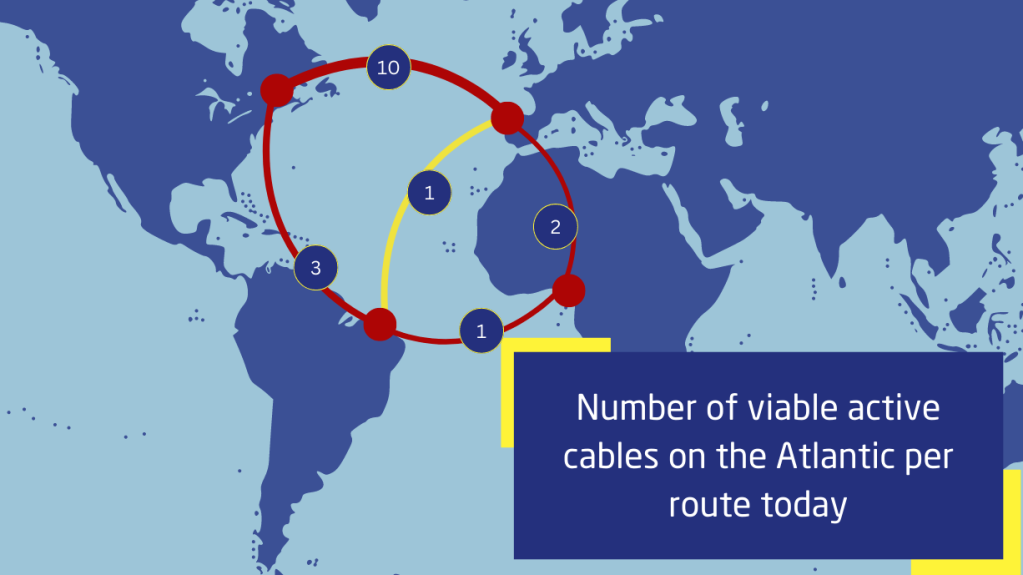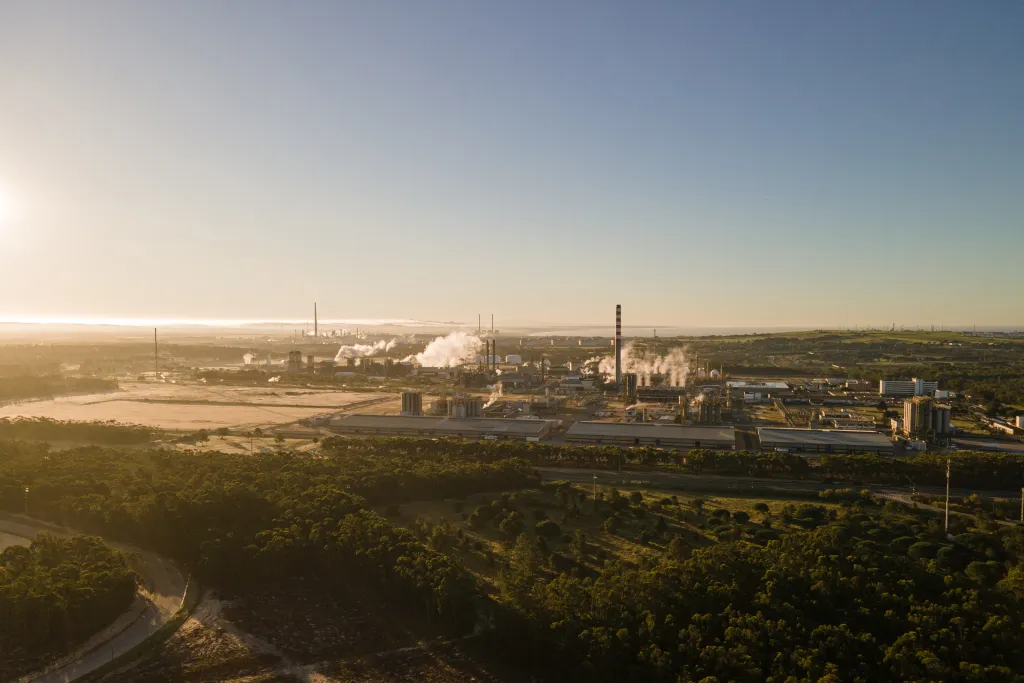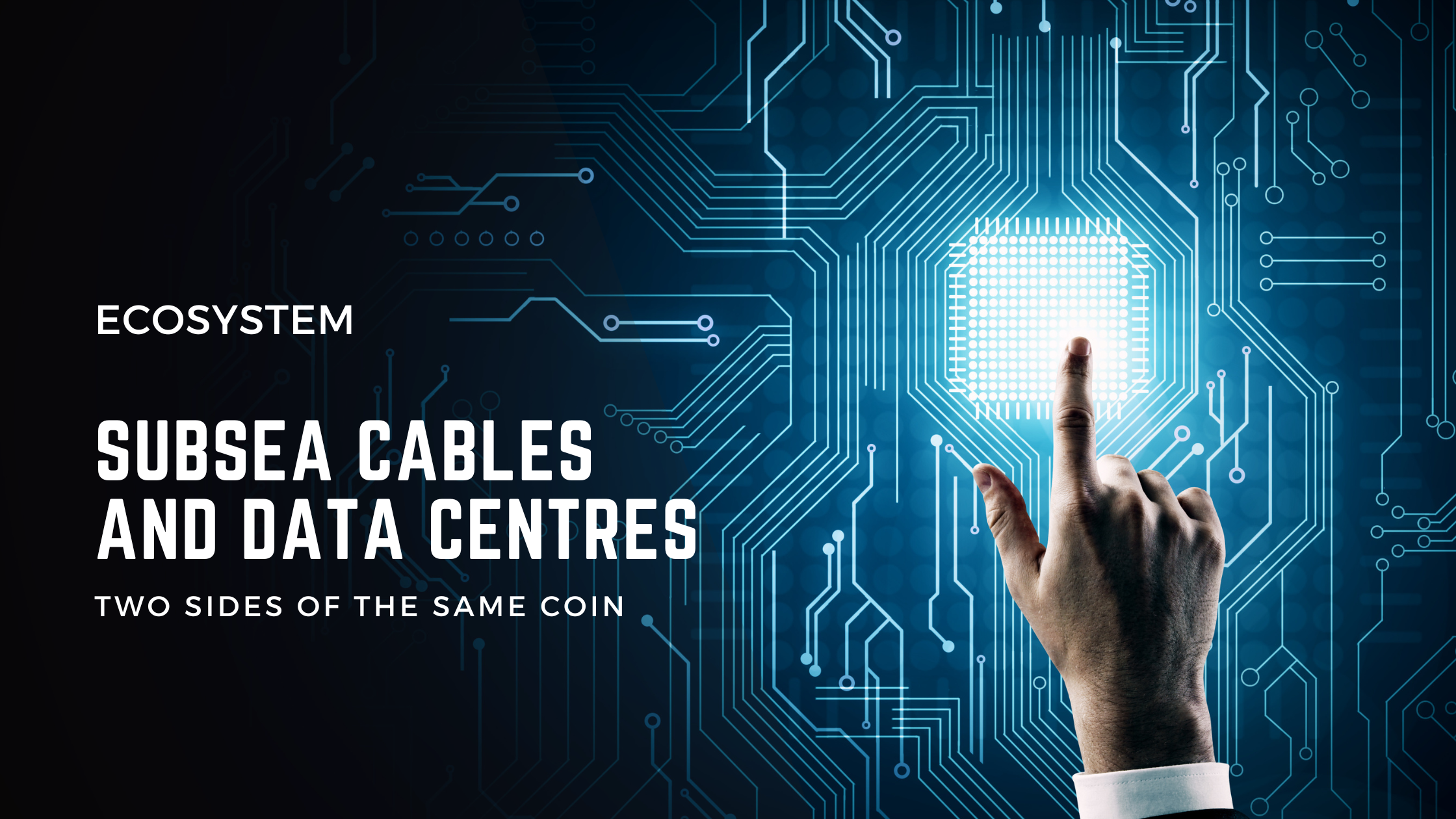Challenges in submarine cable security
Submarine cables are the backbone of the internet! Why? Because 99% of the data runs through subsea cables.
According to the European Parliament report on “Security threats to undersea communications cables and infrastructure”, undersea cables are the backbone of the global economy, with roughly USD 10 trillion in financial transactions transmitted via these cables each day.
Securing finance transactions or any other type of data exchange is not only a technical issue. The challenges in submarine cable security is a political, economic, and social matter. The extreme geographic concentration of the cables makes them “particularly vulnerable” and this is a major issue that has long been ignored.
Subsea cables are not placed in a specific route for no reason. The countries it connects would have already a considerable amount of data to be exchanged or the need to be connected to other regions, again, for commercial, political, and social reasons.
Although Network Operation Centers (NOC) can monitor the marine traffic with Automatic Identification Systems (AIS) in a 365/24/7, a full surveillance of rogue vessels along the cables routes in the Atlantic Ocean, for example, would require enormous military resources. This could imply a combined force placed in site (above and under the sea) with 24/7 surveillance capabilities. And there are about 150 to 200 cable faults every year.
Accidents like fishing vessels and ships dragging anchors account for two-thirds of all cable faults. Environmental factors like earthquakes also contribute to damage. Less commonly, underwater components can fail. Deliberate sabotage is exceedingly rare and very difficult to prove.
Telecommunication cables’ cuts or sabotage are an old used conflict technique. Disconnecting the “enemy” from voice and data telecommunications poses a great advantage.

In parallel, underwater drones have already started to be used in the installation, assessment, and maintenance of submarine cables, adding a layer of security on subsea cables to the smooth continuity of work, especially when sensitive transactions are executed (banking, stock exchange and even professional gaming championships) where speed and latency are fundamental to achieve the best results.
As of 2022, TeleGeography points to 530 active and planned submarine cables. A considerable amount of data is transferred through these critical infrastructures every millisecond.
So, when we are aware that some countries are doing rogue activities, how can we prevent them to pursue their goals? If, like in some war scenarios, the surprise element tends to win, there can be no surprises when we talk about developing and laying a subsea cable.
And here, redundancy plays a strong role!
The EllaLink cable is currently the best option for diversifying routes when we talk about data exchange between Europe and the Americas.
With a capacity of 100 Tbps, EllaLink subsea cable is a unique and direct high-capacity cable from Europe to South America with a total of 4 Fibre Pairs crossing the Atlantic directly from Sines, Portugal, to Fortaleza, Brazil.
Brazil: a Neutral Ally
South American countries’ demand for bandwidth is heavily increasing, and it is forecasted to continue to grow.
As it represents the biggest country, the numbers for Brazil itself are significant, but the entire South American region is shouting for attention in terms of connectivity demand!
The EllaLink subsea cable offers the Latin America region an important alternative to the countries’ data transfer challenges.
Through partnerships and agreements, we consider the entire region now directly connected to Europe, with Brazil in a central, but neutral position.
If South America can be placed as a strategic geopolitical alternative for data transfer, Brazil will play a central role in mediating any potential threats or conflicts via EllaLink subsea cable.
Portugal: the safest gateway to Europe
When data is transferred from Brazil to Europe via the EllaLink subsea cable, it will travel with the best latency in the route between the two geographies.
And, it will enter the European mainland through Portugal – that is one of the safest countries in the world, according to research and the Global Peace Index.
Among the perfect gastronomy that charms visitors, Portugal has all the conditions to become a technological hub of reference worldwide.
In a recent article on our website – which we invite you to read -, we reinforce the arguments that place Portugal with a unique set of conditions to connect Europe to markets such as North America, South America, Africa, and the Middle East/Asia.
After all, the volume of data worldwide has been increasing exponentially. Deloitte says that the amount of data created, consumed, and stored is expected to exceed 180 zettabytes by 2025, 90 times the amount of data in 2010.
Europe must play a more relevant role in connectivity since much of this traffic does not yet pass through the Old Continent. And Portugal has the unique conditions to attract the biggest technology players that need to expand their offer in the global data market, says Deloitte.
You May Also Like
Sines technological hub: the (huge) potential to become a world reference
Sines is the “Hidden Gem of Connectivity”, says Deloitte. EllaLink is already there with
Subsea cables and data centres: two sides of the same coin
Submarine cables have everything to win to be placed closed to Data Centres, including hyperscalers
6 reasons why EllaLink new route is a game changer
It is all about the route Since the deployment of the very first submarine cable system, the Atlanti


